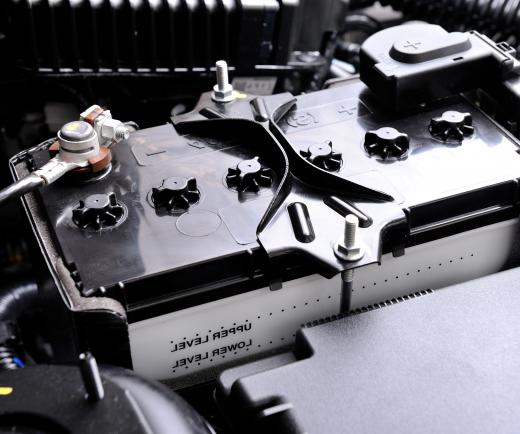A battery tray is a device used for holding large battery packs in place. The tray prevents the battery from rolling out of place and causing damage to surrounding objects, or even to the battery itself. Many feature mounting bolts to hold the tray in place, as well as adjustable straps to keep the battery anchored in the tray. These trays also prevent battery acid and other caustic materials from dripping or leaking onto nearby surfaces.
Some type of battery tray can be found in most vehicles and marine vessels. In a boat, the battery tray holds the battery in place during rough conditions. In cars or motorcycles, the battery tray makes it easier to access and remove the battery as needed, and also protects the remaining engine components from rust and corrosion. When leaks or corrosion occur, users can simply remove the existing battery tray and replace it with a new model. A new tray can also act as a liner between the existing tray and the battery.

Depending on the model, these trays may be constructed from steel, aluminum, or thermoplastic materials. In many instances, stainless steel or galvanized steel are used to minimize the effects of rust and corrosion. Thermoplastic trays are often the best choice in a marine environment, where seawater increases the effects of corrosion.
Battery trays must be chosen carefully to ensure a secure fit. Most automobiles and motorcycles require a specific type of battery tray based on the vehicle make and model. A battery is unlikely to fit securely in the wrong tray, which could lead to performance and safety issues.

On a boat, trays may be interchangeable to fit common battery sizes. Buyers should pay attention to the maximum battery height permitted by the straps on each tray, as well as to the mounting options offered by each model. If the battery is mounted in a hard-to-reach area, a low-profile or compact battery tray may be required. Some boats require dual battery trays to hold either a spare battery or a pair of active batteries.
Battery trays offer a number of benefits to users beyond basic battery security. Not only is the battery protected from damage, it is also held in place to maintain power connections with related equipment. A loose battery may become disconnected, causing systems that run off the battery to fail. Battery trays also make it easier to remove and reinstall the battery, particularly in a boat where battery access may be limited.
